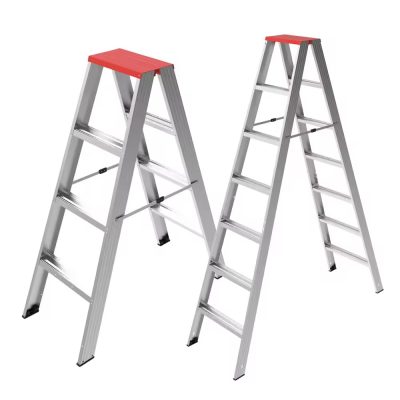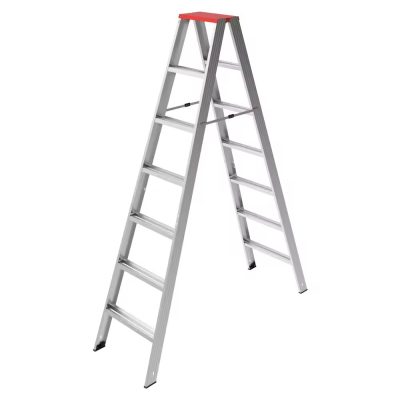Bridges stand as iconic symbols of connectivity, spanning rivers, valleys, and highways, facilitating the movement of people and goods across vast distances. However, ensuring the structural integrity and safety of these vital transportation arteries requires diligent inspection and maintenance. At the forefront of bridge maintenance operations are aluminum ladders, versatile tools that provide safe and reliable access to elevated bridge components. In this exploration, we delve into the indispensable role of aluminum ladders in bridge inspection and maintenance, highlighting their contributions to enhancing safety, efficiency, and the longevity of critical infrastructure.
Ascending to the Apex of Bridge Maintenance:
Bridges, with their towering spans and intricate structures, present unique challenges in terms of maintenance access. Aluminum ladders serve as essential tools for accessing elevated components such as bridge decks, support structures, and suspension cables. From visual inspections to structural repairs and painting, these ladders provide maintenance crews with stable and secure platforms to work from, enabling them to perform a wide range of tasks safely and effectively.
Safety as the Foundation:
Safety is paramount in bridge maintenance, where technicians operate at considerable heights and face potential hazards such as traffic, inclement weather, and structural instability. Aluminum ladders prioritize safety through robust design features such as non-slip rungs, sturdy handrails, and secure locking mechanisms. Additionally, adherence to stringent safety regulations and industry standards ensures that ladders are inspected regularly and maintained in optimal condition, mitigating risks and safeguarding the well-being of maintenance crews.
Adaptability to Bridge Configurations:
Bridges come in a variety of designs and configurations, each with its unique maintenance requirements. Aluminum ladders excel in adapting to these diverse environments, offering a range of configurations—from extension and combination ladders to platform and rolling ladders—that cater to different bridge types and maintenance tasks. Lightweight construction and collapsible designs enable ladders to be transported and positioned easily, ensuring maintenance crews can access even the most challenging areas of bridges with ease.
Durability for Long-Term Reliability:
Bridges are subjected to constant exposure to weather elements, traffic vibrations, and environmental factors, necessitating durable maintenance solutions. Aluminum ladders are prized for their durability and resilience, thanks to their construction from high-grade aluminum alloys known for their strength and corrosion resistance. These ladders withstand the rigors of regular use in bridge maintenance, retaining their structural integrity and performance over extended periods, thereby contributing to the long-term reliability and safety of critical transportation infrastructure.
Enhancing Connectivity and Mobility:
By providing safe and reliable access to elevated bridge components, aluminum ladders contribute to enhancing connectivity and mobility in transportation networks. Maintenance crews can perform tasks more effectively and expediently when equipped with the right tools, ensuring that bridges remain operational and safe for vehicular and pedestrian traffic. Moreover, the ergonomic design and user-friendly features of aluminum ladders optimize maintenance crew comfort and productivity, further enhancing overall operational efficiency and ensuring that maintenance operations are conducted with precision and excellence.
Conclusion:
In the dynamic and vital realm of bridge maintenance, aluminum ladders emerge as indispensable tools for ensuring the reliability and safety of critical transportation infrastructure. By enabling safe and efficient access to elevated bridge components, these versatile ladders play a fundamental role in facilitating routine inspection and maintenance operations. As the demand for seamless connectivity and mobility continues to grow, aluminum ladders will remain essential assets, empowering maintenance crews to scale new heights safely and uphold the integrity of bridges for generations to come.







